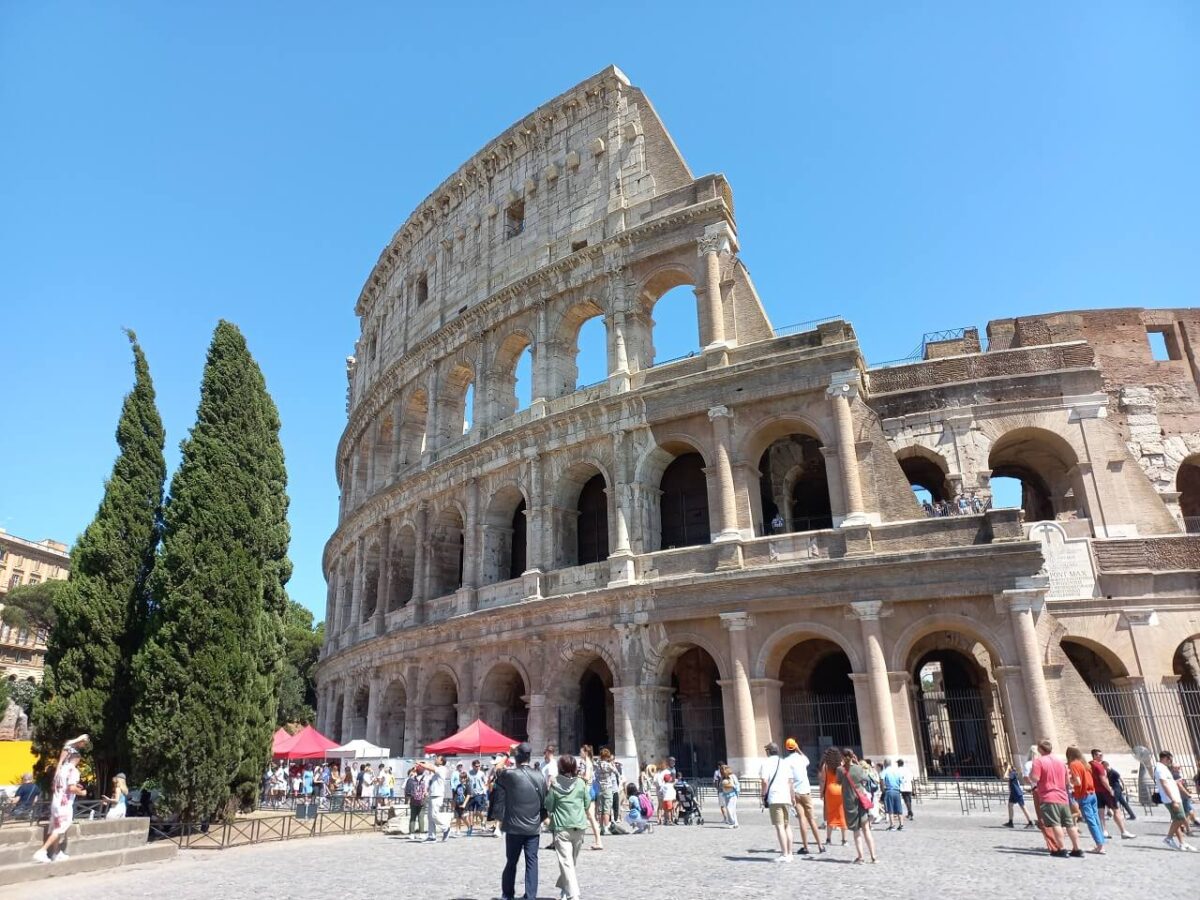All roads lead to Rome
The age-old saying “All roads lead to Rome” resonates deeply with the spirit of every traveler and tourist.
This proverb, stemming from Rome’s ancient legacy as the heart of an extensive road network, symbolizes the city’s undeniable magnetism and central place in the world of travel.
Just as the roads of the Roman Empire converged upon this historic city, so too do the journeys of modern explorers, drawn by the allure of its timeless beauty and rich history.
Rome, with its labyrinth of cobbled streets, awe-inspiring monuments, and layers of history, is more than a destination; it’s a pilgrimage for the soul of every traveler.
To wander through Rome is to walk through pages of history, to witness the grandeur of empires, and to be part of a narrative that has captivated wanderers for millennia.
In this sense, Rome isn’t just an indispensable destination; it’s a rite of passage for anyone who considers themselves a traveler or a tourist.
It’s a testament to the saying that no matter what path one takes, all roads, indeed, lead to Rome.
But there is also the other side of this “Roman coin”.
It reveals a city pulsating with modern Italian lifestyle.
Here, ancient history and contemporary zest blend seamlessly, offering travelers a chance to immerse themselves in the quintessential ‘dolce vita.’
Rome buzzes with lively trattorias, chic boutiques, and bustling piazzas, where the rhythm of Italian life is as palpable as the echoes of its illustrious past.
Each street corner tells a story, each café whispers secrets of modern Roman life.
In this city, the “Roman coin” doesn’t just represent a rich historical legacy; it’s also a symbol of the vibrant, ever-evolving tapestry of present-day Rome.
A city where, amidst the relics of time, one can sip espresso, savor gelato, and revel in the lively spirit of today’s Italy.
For the traveler seeking the allure of Italy, Rome offers this dual experience – an invaluable coin, which sides of history and modernity are equally mesmerizing and uniquely Roman.
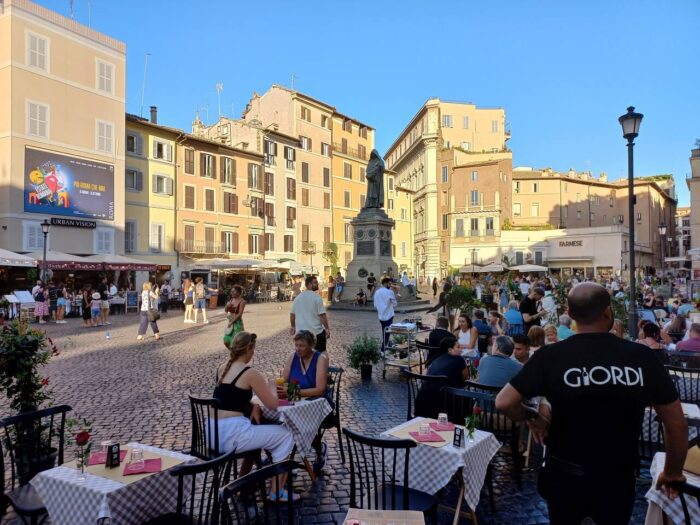
My list of places to see in Rome
Here’s my list of ten places to see in Rome (in alphabetical order).
Colosseum
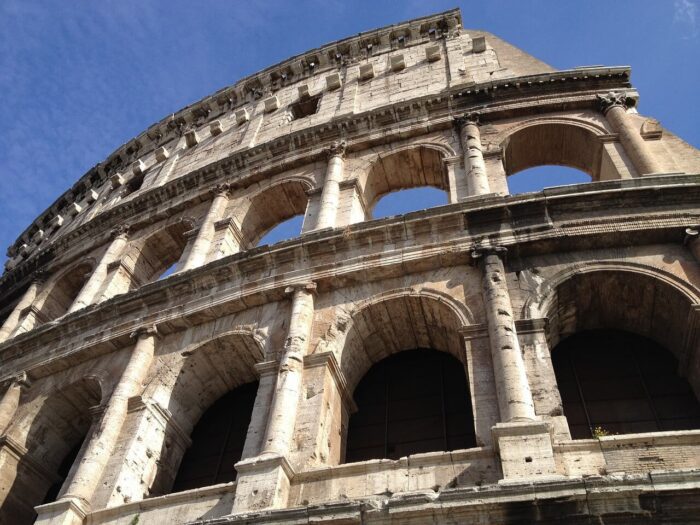
Did you know…?
A surprising fact about the Colosseum is its ancient underground world.
Beneath the arena, there was a complex system called the hypogeum.
It consisted of tunnels and cages. Gladiators and animals were held there before battles.
The hypogeum had elevators and trapdoors. These were used for dramatic entrances in the arena.
Most spectators didn’t know about this hidden layer. The hypogeum was a key part of the Colosseum’s function.
Today, parts of it are open to the public. It offers a unique glimpse into ancient Roman engineering.
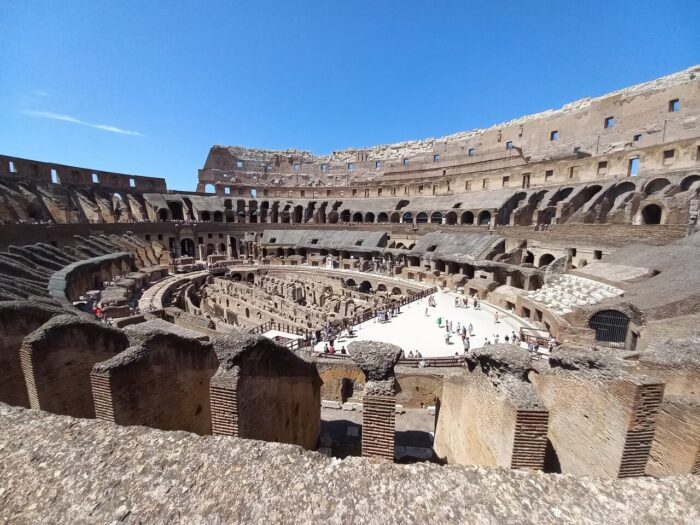
What is Colosseum and why see it?
The Colosseum is an iconic ancient amphitheater. It’s known worldwide for its immense size and architectural complexity.
Built in the 1st century AD, it was used for gladiatorial contests and public spectacles. The Colosseum could hold up to 80,000 spectators.
It’s a marvel of Roman engineering and design. Despite centuries, its ruins still impress visitors.
The structure symbolizes the power and innovation of the Roman Empire. It’s special for its historical and cultural significance.
The Colosseum remains a must-visit for its awe-inspiring presence and historical importance.
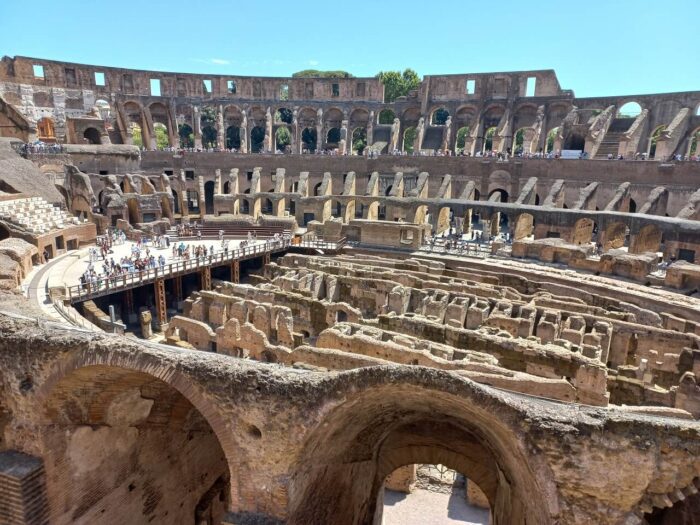
How to enjoy the Colosseum?
To reach the Colosseum, take the Rome metro and exit at the Colosseo station. It’s right near the monument.
It’s best to buy tickets online in advance. This helps avoid long lines at the site. Visiting early in the morning or later in the afternoon can be less crowded. Be aware of the strict security checks. Large bags and backpacks aren’t allowed inside.
Wear comfortable shoes as there’s a lot of walking. Bring a water bottle, especially in hot weather. Guided tours are available. They offer deeper insights into the Colosseum’s history.
Remember to take your time and soak in the atmosphere. This ancient wonder is not just a site, but an experience.
More information: the Colosseum website
The Forum Romanum and the Palatine Hill
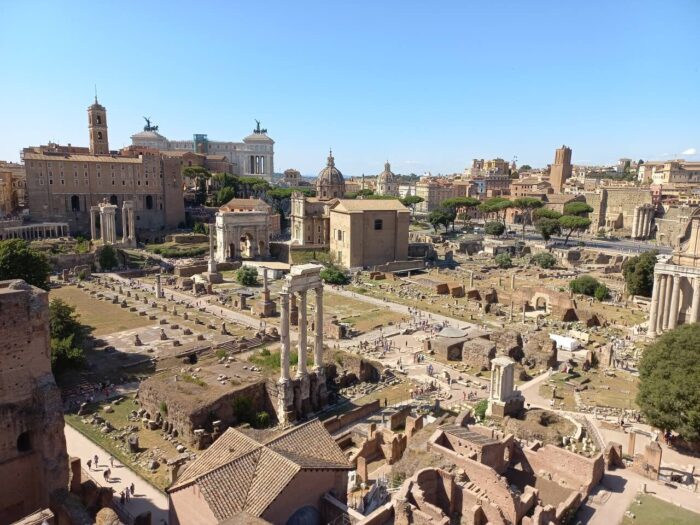
Did you know…?
A fascinating fact about the Forum Romanum and the Palatine Hill is their connection to the legendary origins of Rome.
It’s believed that the Palatine Hill is where Romulus and Remus, the twin founders of Rome, were found by the she-wolf. This legend is central to Roman mythology.
The Forum, adjacent to the hill, was the heart of the ancient Rome. Here, the earliest Roman civilization developed.
The Forum and the Palatine Hill aren’t just historical sites. They are the cradle of Rome’s founding myths.
Visitors walking these grounds are treading paths where Rome’s legendary history began.
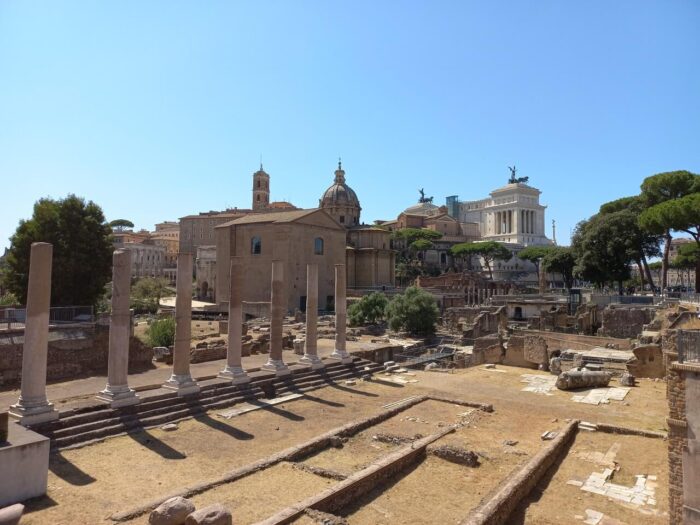
What are the Forum Romanum and the Palatine Hill and why see them?
The Forum Romanum and the Palatine Hill are among Rome’s most significant historical sites.
The Forum was the center of Roman public life. It hosted triumphal processions, elections, and public speeches. Now, it’s a sprawling ruin with remnants of ancient temples and buildings.
The Palatine Hill is one of Rome’s seven hills. It’s steeped in history and mythology.
These sites offer a unique window into ancient Rome. They provide an unparalleled glimpse into the city’s past.
Walking through them is like stepping back in time. The Forum and the Palatine Hill are essential for understanding Rome’s history and culture.
They are must-visits for anyone interested in the ancient world.
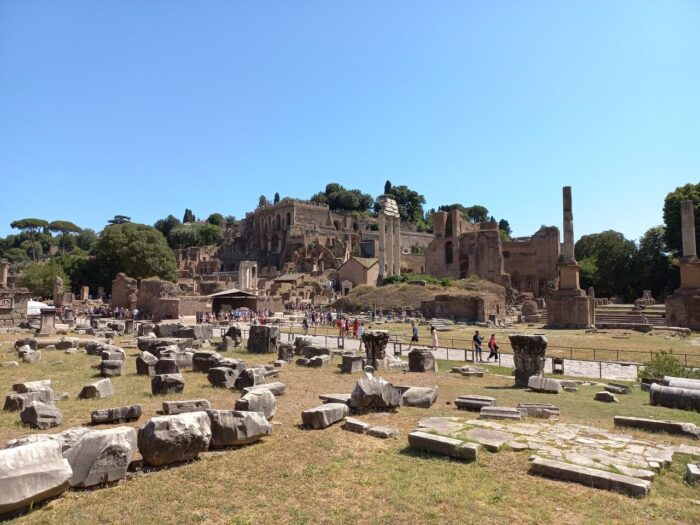
How to enjoy the Forum Romanum and the Palatine Hill?
To visit the Forum Romanum and the Palatine Hill, take the metro to Colosseo station. The entrance is close by. Actually, it is very close to the Colosseum itself.
Buying a combined ticket for the Colosseum, Forum, and Palatine is cost-effective.
It’s best to visit early or late to avoid crowds. Comfortable walking shoes are essential. The terrain is uneven and vast.
Carrying a water bottle is advised, especially in summer. Hiring a guide or using an audio guide enriches the experience. They provide historical context and stories.
Be prepared for outdoor conditions. Sunscreen and hats are recommended on sunny days.
Allow several hours to fully explore and appreciate these ancient sites. Remember, patience and time are key to enjoying these historical treasures.
The Pantheon
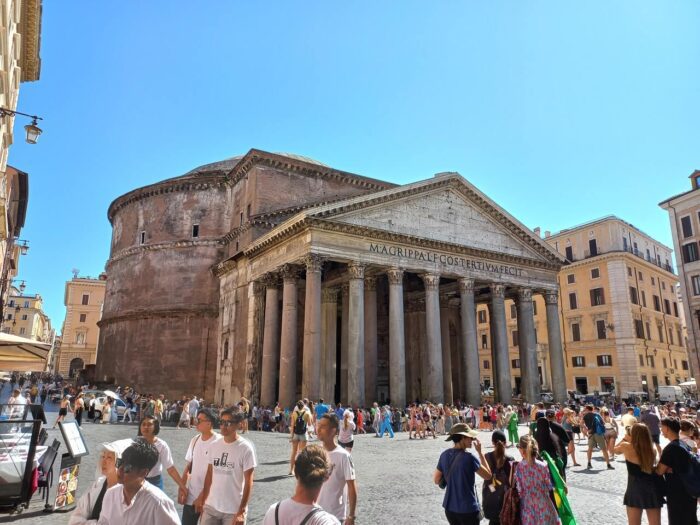
Did you know…?
A captivating fact about the Pantheon is its oculus, the only light source in this ancient temple.
This architectural feature is not just for light. It also acts as a cooling and ventilation method.
On rainy days, a remarkable sight occurs. Rain falls through the oculus, creating a unique atmosphere inside.
The floor beneath is cleverly designed with drainage holes. These prevent water from pooling.
This aspect of the Pantheon highlights Roman architectural ingenuity. It continues to amaze visitors today.
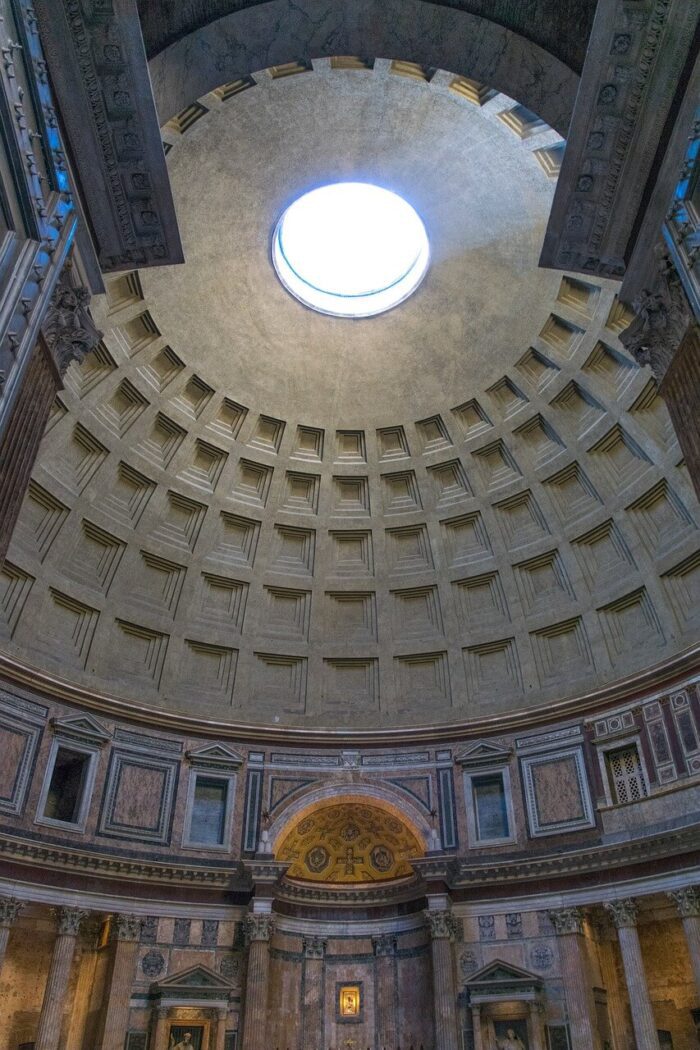
What is the Pantheon and why see it?
The Pantheon is an ancient temple, now a church.
It’s renowned for its remarkable architecture and history. Built around 126 AD, it’s one of the best-preserved Roman buildings.
Its famous dome, with a central oculus, is a marvel of ancient engineering. The dome was the largest in the world for centuries.
The Pantheon’s design has influenced many modern buildings.
Inside, it houses tombs of notable figures like Raphael.
The building’s symmetry and proportions are extraordinary. Its blend of architectural genius and historical significance make it a must-visit.
The Pantheon definitely offers a glimpse into the grandeur of ancient Rome.
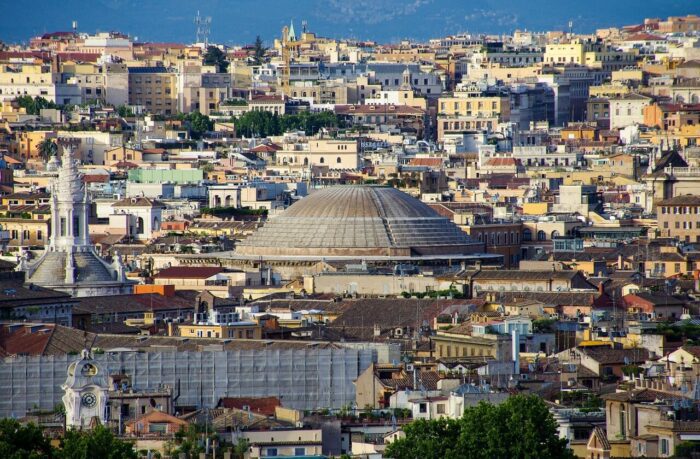
How to enjoy Pantheon?
To visit the Pantheon, you can easily walk from many central locations in Rome. The closest metro stop is Barberini.
It’s best to visit early in the morning or later in the afternoon. This helps avoid the crowds.
Remember, it’s an active church. Dress respectfully and maintain quiet inside.
Photography is allowed, but without flash. There’s no guided tour inside, but audio guides are available.
Be sure to look up at the dome, especially the oculus. It’s a stunning sight.
Also, take time to appreciate the building’s exterior. Its grand columns and pediment are impressive.
The Pantheon is more than a monument; it’s a piece of history. Enjoying it fully means taking your time to soak in its ancient beauty.
More information: the Pantheon website
Piazza Navona
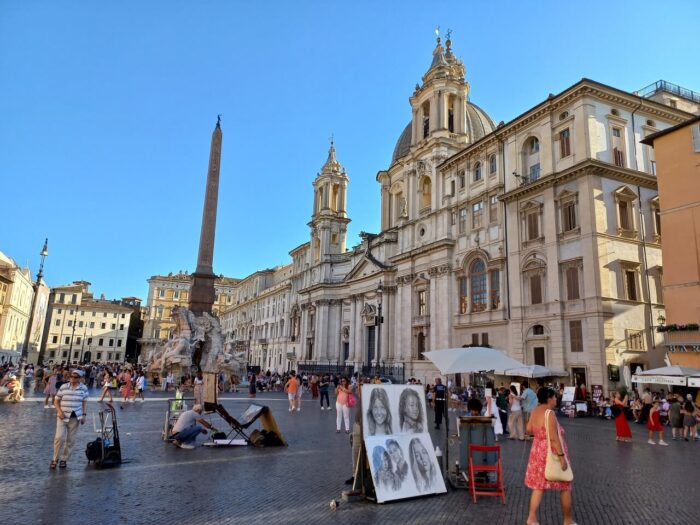
Did you know…?
A lesser-known fact about Piazza Navona is its origins as a stadium.
Emperor Domitian built it in the 1st century AD. It was used for ancient Roman games, known as ‘agones’.
The piazza’s shape today mirrors the original stadium layout.
This historic layer is often overlooked amidst its Baroque art and architecture.
Beneath the piazza, remnants of the ancient stadium still exist.
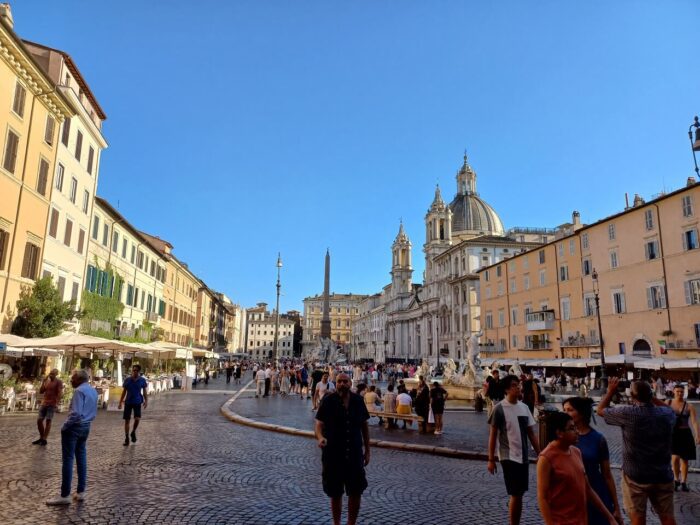
What is Piazza Navona and why see it?
Piazza Navona is a famous square in Rome, known for its stunning Baroque architecture.
It’s a vibrant public space, surrounded by restaurants and cafes.
The square features three magnificent fountains. The most famous is the Fountain of the Four Rivers, designed by Bernini.
Piazza Navona is also known for its street artists and performers. It’s a hub of Roman culture and social life. The blend of artistic heritage and lively atmosphere makes it special.
Visitors to Piazza Navona can enjoy both art and the everyday buzz of Rome. It’s a perfect spot to experience the charm and history of the city.
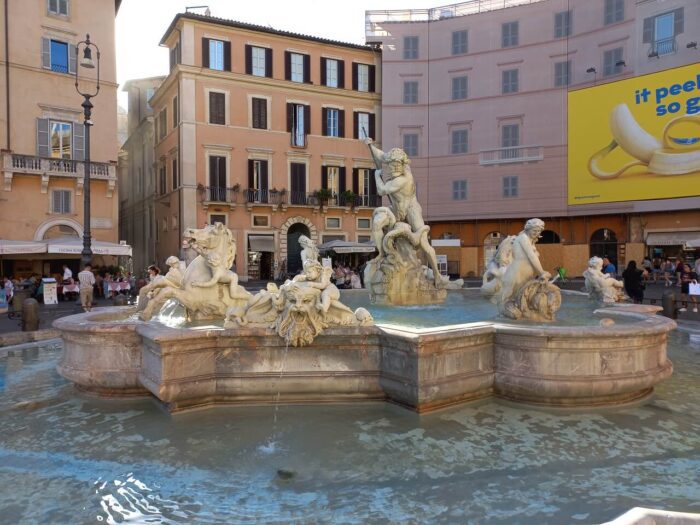
How to enjoy Piazza Navona?
Piazza Navona is easily accessible on foot from many central locations in Rome. The closest bus stops are Senato and Rinascimento. There’s no metro station directly nearby.
The square is always open and free to visit. It’s best to go either early morning or evening. This avoids the peak crowds.
Be aware of street vendors and performers. They are part of the square’s charm..
Enjoy the fountains and architecture at a leisurely pace.
Street artists often display their work, adding to the vibrant atmosphere. Remember to take photos, but be respectful of the local culture.
Piazza Navona is a place to soak in the Roman lifestyle. Enjoy the history and energy of this iconic square.
Piazza Venezia
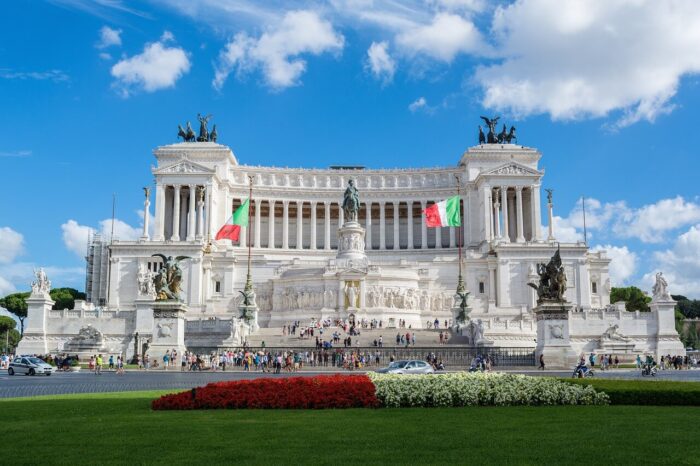
Did you know…?
Beneath the bustling square lies a series of tunnels and rooms. These were part of Mussolini’s air raid shelters during World War II. The shelters were built for protection against bombings.
Today, they are a hidden part of Rome’s history. They offer a glimpse into a turbulent period of the city’s past.
This aspect of Piazza Venezia is often overshadowed by its grandiose buildings and traffic.
Yet, it adds a unique historical layer to the square, intriguing for those interested in modern history.
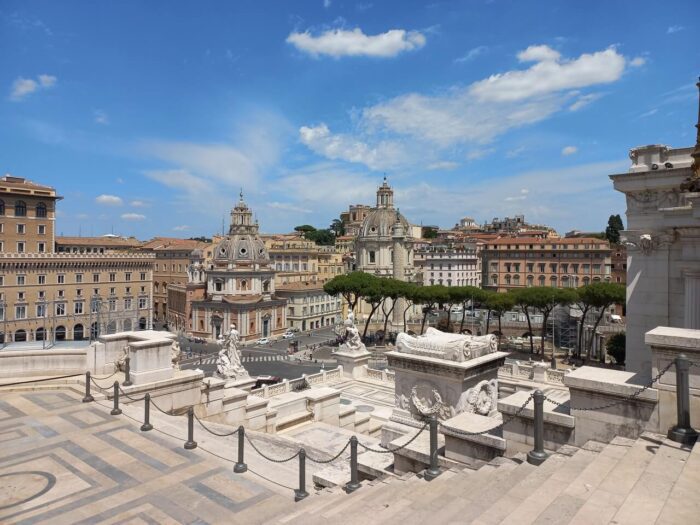
What is Piazza Venezia and why see it?
Piazza Venezia is a major square in central Rome. It’s known for its grandiose buildings and busy traffic.
The most notable building is the Vittoriano. This massive monument honors Victor Emmanuel II, the first king of unified Italy. Its white marble and grand staircases are impressive.
Piazza Venezia is a gateway to ancient Rome’s major sites. It offers a striking contrast between modern hustle and historical grandeur.
The square provides a unique snapshot of Rome’s dynamic character. Its central location makes it a must-visit for any traveler to Rome.
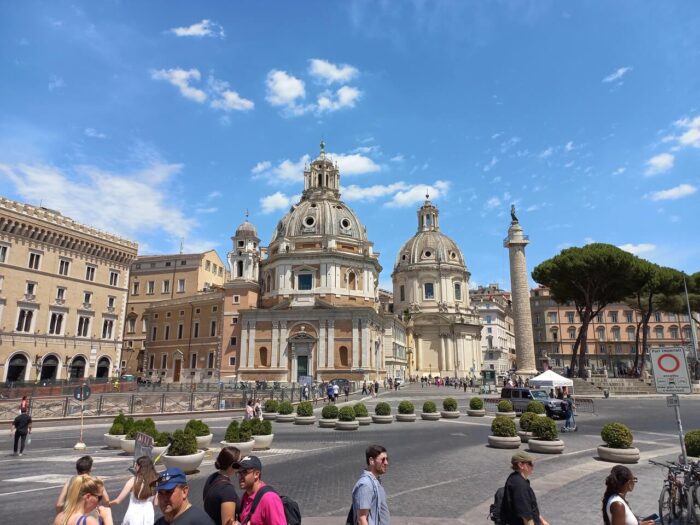
How to enjoy Piazza Venezia?
To reach Piazza Venezia, take the bus or walk from nearby attractions in central Rome. It’s a major transport hub. The square is always bustling, so be mindful of traffic.
The Vittoriano monument offers a panoramic view of Rome.
Climbing it is a highlight, but there are many stairs. Wear comfortable shoes for walking.
Nearby streets have historical sites and shops. Take time to explore these too.
Piazza Venezia is a great starting point for a Rome tour. Its location and significance make it an essential experience.
Quartiere Coppedè
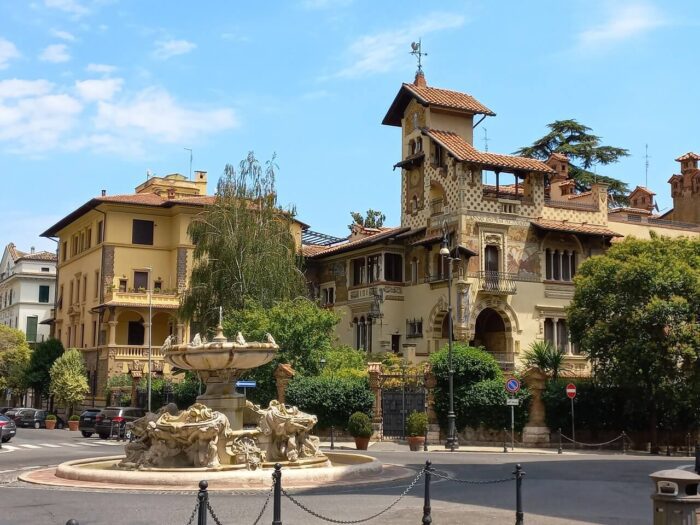
Did you know…?
Quartiere Coppedè, a hidden gem in Rome, is known for its unique architecture.
But a lesser-known fact is about its “Frog Fountain.” This charming fountain, located at the heart of the quarter, is surrounded by whimsical, fairy-tale like buildings.
The surprising element is its origin story. The fountain gets its name from the small frog sculptures adorning it.
According to local legend, touching one of these frogs brings good luck.
This quirky tradition has made the fountain a favorite spot for both locals and in-the-know tourists.
Quartiere Coppedè’s blend of architectural beauty and playful folklore makes it a delightful and unexpected find in Rome.
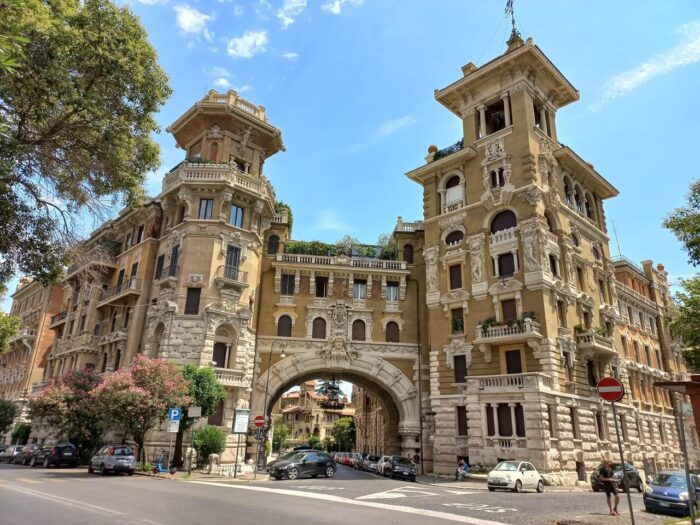
What is Quartiere Coppedè and why see it?
Quartiere Coppedè is a unique and artistic neighborhood in Rome.
It’s renowned for its whimsical and eclectic architectural style.
Designed by architect Gino Coppedè in the early 20th century, it features a blend of Art Nouveau, Baroque, and Medieval elements.
The quarter’s buildings are adorned with intricate decorations, sculptures, and symbols.
Walking through Quartiere Coppedè is like entering a fairy tale world. Its special charm lies in its distinctiveness, offering a break from Rome’s more traditional architecture.
Visitors can explore its enchanting streets, discovering hidden gems at every turn. It’s a must-visit for those seeking a different, artistic side of Rome.
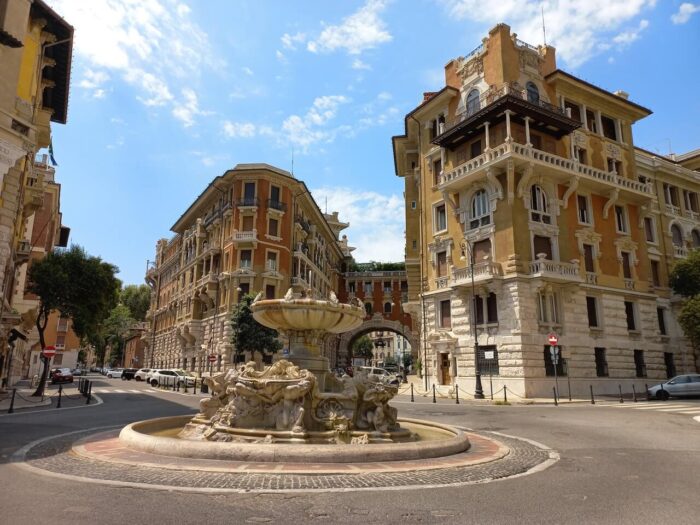
How to enjoy Quartiere Coppedè?
To reach Quartiere Coppedè, take tram line 3 from central Rome. It’s a short ride to the quarter.
The neighborhood is not as crowded as other tourist spots. Strolling through the streets and admiring the architecture is the main attraction.
Keep in mind that most buildings are private, so visitors can’t enter.
Enjoy the unique atmosphere, and don’t forget to look for the “Frog Fountain.”
Quartiere Coppedè is best explored leisurely, allowing you to appreciate its artistic and whimsical details.
The Spanish Steps
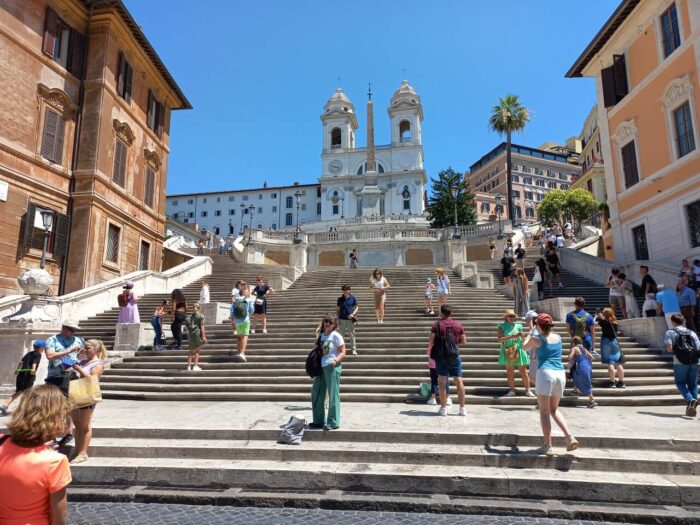
Did you know…?
A lesser-known fact about the Spanish Steps is their inspiration from a boat.
Architect Francesco de Sanctis, who designed the steps in the 18th century, took inspiration from the curving shape of a boat’s bow.
This unexpected source of inspiration adds a maritime twist to the iconic staircase.
The design choice reflects Rome’s historical connection to the Tiber River and the Mediterranean Sea.
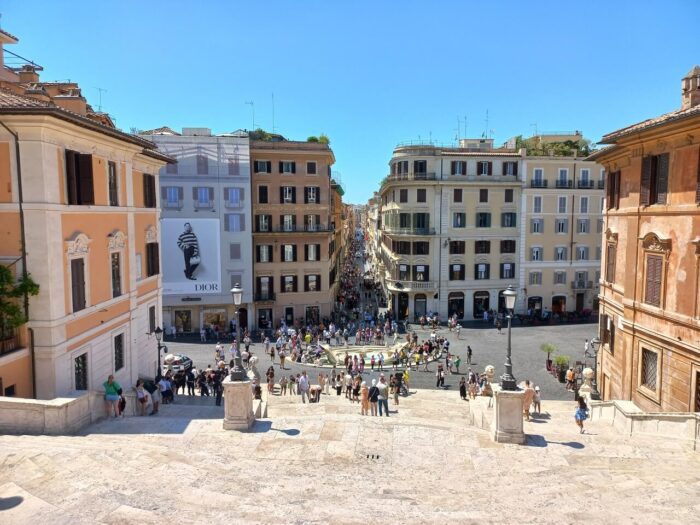
What are the Spanish Steps and why see them?
The Spanish Steps in Rome are a famous and iconic staircase of 135 steps that connect the Piazza di Spagna and the Trinità dei Monti church at the top.
They are known for their grandeur, historical significance, and the bustling atmosphere of the Piazza di Spagna below.
The steps are a popular gathering place and offer a great vantage point for people-watching.
Additionally, the Scalinata is adorned with azaleas in the spring, creating a stunning floral display.
The Spanish Steps are not just a historic site, but also a place to experience the vibrant life of Rome.
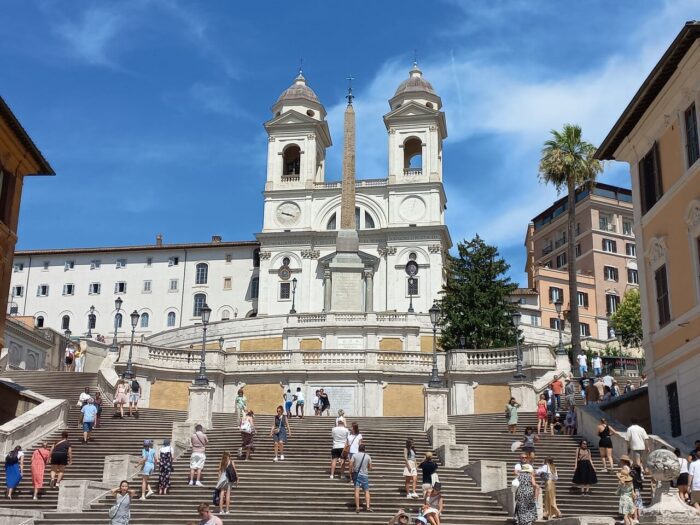
How to enjoy the Spanish Steps?
To reach the Spanish Steps, you can take the metro Line A to the Spagna station.
The steps are a public space and are free to visit. It’s best to visit early in the morning or later in the evening to avoid crowds.
Sitting on the steps is not allowed, but there are plenty of nearby cafes and benches for a break.
Enjoy the atmosphere and the view of the Piazza di Spagna below. Remember that the steps are a central meeting point, so it can get busy.
Taking your time to soak in the ambiance and people-watching is part of the experience.
Trastevere
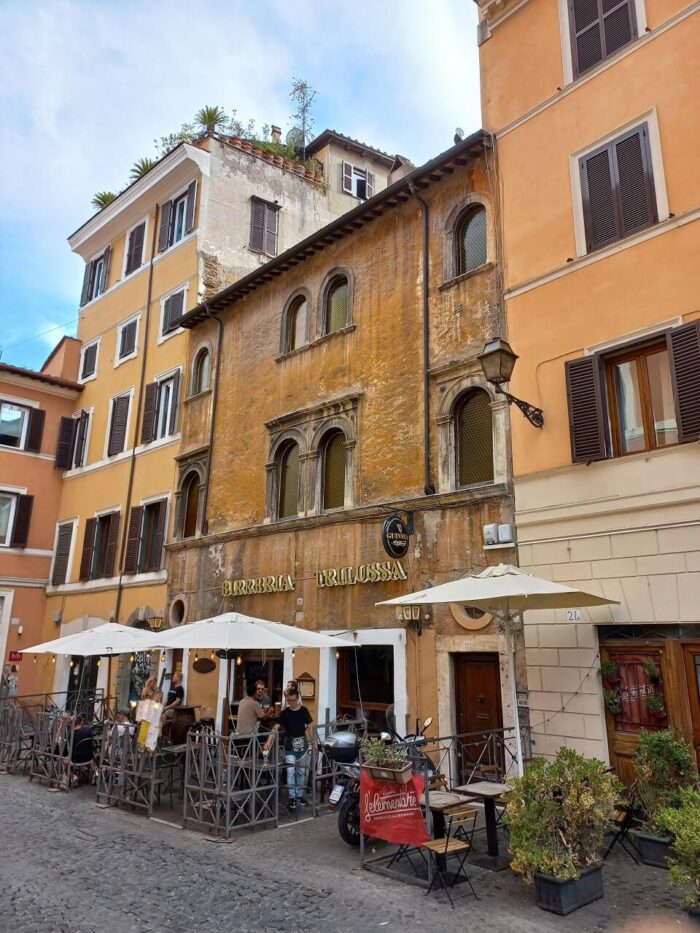
Did you know…?
A hidden gem in Trastevere is the Basilica of Santa Cecilia.
Beneath this unassuming church lies a secret. In the crypt, you’ll find the preserved body of Saint Cecilia.
What makes this unique is that her body is remarkably lifelike, with her features still visible.
Legend has it that her body was found in this state centuries after her death.
Visitors to Trastevere are often unaware of this intriguing historical and spiritual relic hidden beneath the bustling streets of the neighborhood.
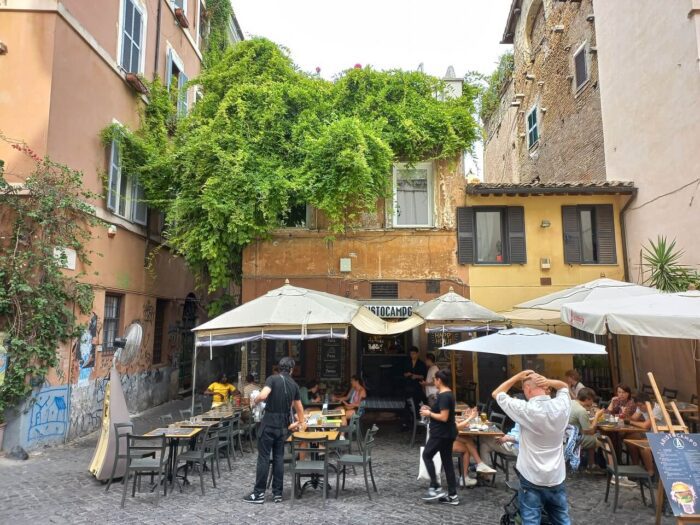
What is Trastevere and why see it?
Trastevere is a charming and historic neighborhood in Rome, located on the west bank of the Tiber River.
What makes it special is its old-world atmosphere, characterized by narrow cobbled streets, colorful buildings, and a strong sense of community.
It’s known for its lively nightlife, traditional Roman trattorias, and local artisan shops.
Trastevere offers a glimpse into authentic Roman life, away from the tourist crowds. It’s a place to wander, get lost in the picturesque alleys, and discover hidden gems.
The neighborhood’s timeless charm and vibrant street scenes make it a must-visit destination in Rome.
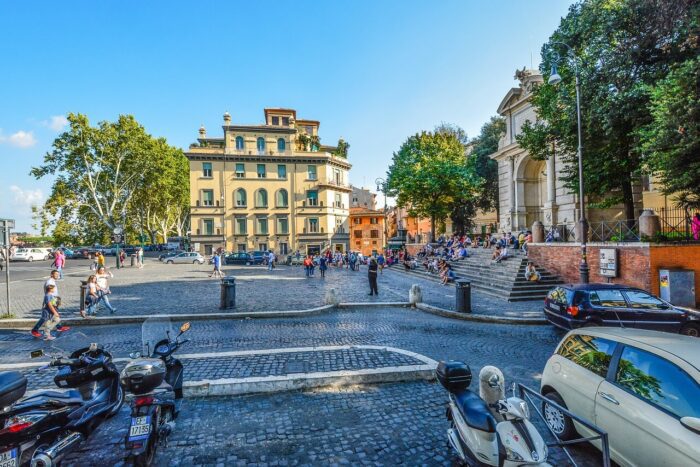
How to enjoy Trastevere?
To reach Trastevere, take tram number 8 from Piazza Venezia. You can also walk from the city center.
Trastevere is known for its charming, narrow streets. It’s a bustling area, especially at night.
Be mindful of uneven cobblestones. Wear comfortable shoes.
Explore the local shops and trattorias for authentic Roman cuisine.
The neighborhood is perfect for leisurely strolls.
Experience the lively, local atmosphere. It’s less touristy, offering a genuine Roman experience.
The Trevi Fountain
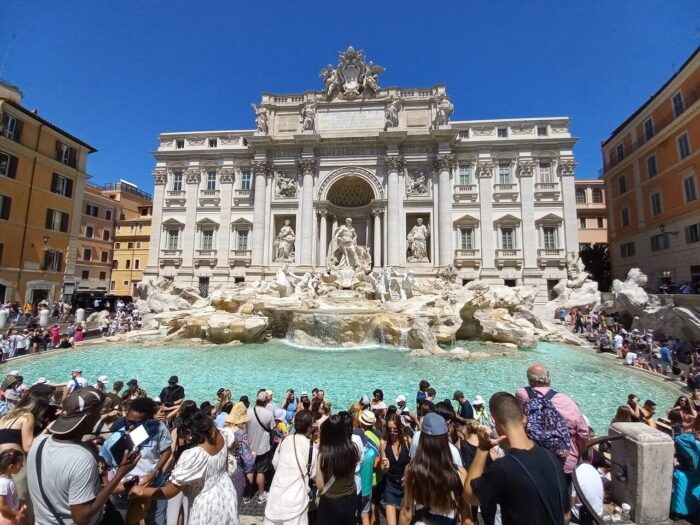
Did you know…?
A lesser-known fact about the Trevi Fountain is its nightly cleaning ritual.
Each night, the fountain is meticulously cleaned by a team of experts. This ensures that it remains pristine and beautiful for visitors during the day.
The process involves removing coins, debris, and any objects thrown into the fountain.
The coins collected are donated to charity, making the Trevi Fountain not just a symbol of beauty but also of generosity and goodwill.
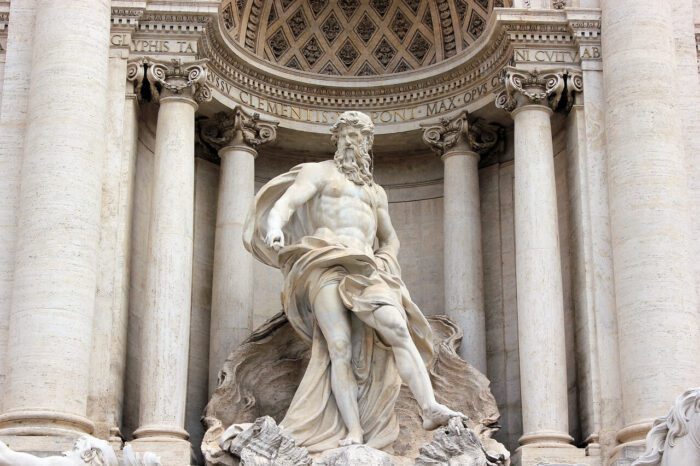
What is the Trevi Fountain and why see it?
The Trevi Fountain is an iconic Baroque masterpiece and one of the world’s most famous fountains.
Designed by architect Nicola Salvi and completed in the 18th century, it features intricate sculptures and a stunning central figure of Neptune.
What makes it special is the tradition of throwing a coin over your left shoulder into the fountain, ensuring your return to Rome.
The fountain’s grandeur and the magical legend associated with it make it a top attraction in the city.
Visitors flock to the Trevi Fountain not only for its artistic beauty but also to participate in this age-old custom.
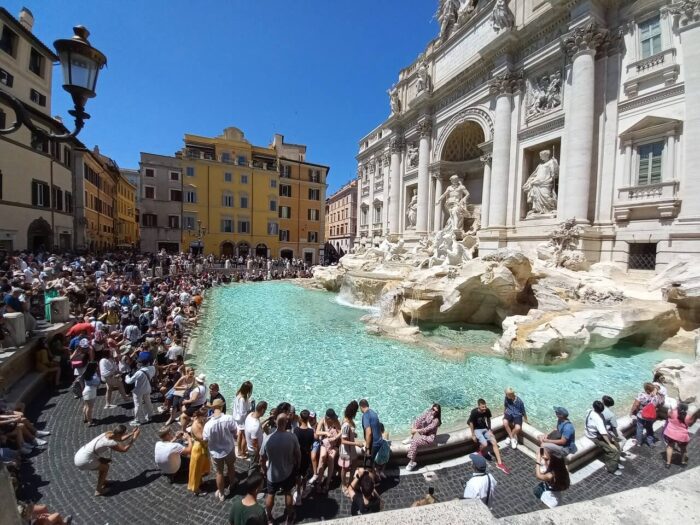
How to enjoy the Trevi Fountain?
To reach the Trevi Fountain, you can walk from many central locations in Rome.
It’s best to visit early morning or late evening to avoid crowds.
Remember to bring small change if you want to participate in the coin-throwing tradition.
It’s important to respect the site by not climbing on the fountain or swimming in it, as this can result in fines.
Enjoy the fountain’s beauty from a distance, and don’t forget to make a wish and toss a coin over your left shoulder to ensure your return to Rome.
Vatican City
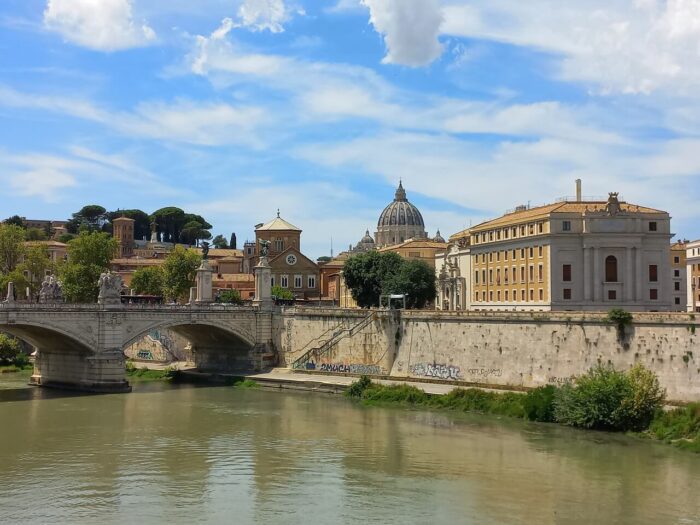
Did you know…?
The dome of St. Peter’s Basilica offers one of the most stunning views in Rome.
Climbing to the top, visitors are rewarded with a panoramic vista that spans the entire Vatican City and stretches across the urban landscape of Rome.
From this vantage point, the intricate details of the Vatican gardens unfold below, while the historic city spreads out in a breathtaking display.
It’s a must-see for any traveler, offering a unique perspective of both the Vatican’s grandeur and Rome’s timeless beauty.
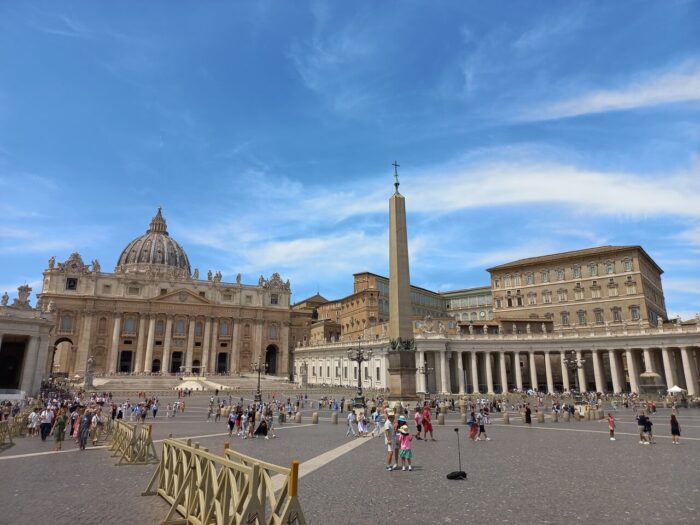
What is Vatican City and why see it?
The Vatican City, the world’s smallest sovereign state, lies within Rome. It serves as the epicenter of the Catholic Church and the Pope’s residence.
Renowned for its religious and cultural significance, it attracts visitors globally.
Highlights include the majestic St. Peter’s Basilica and Michelangelo’s awe-inspiring Sistine Chapel.
The Vatican Museums house a vast collection of priceless art and historical artifacts.
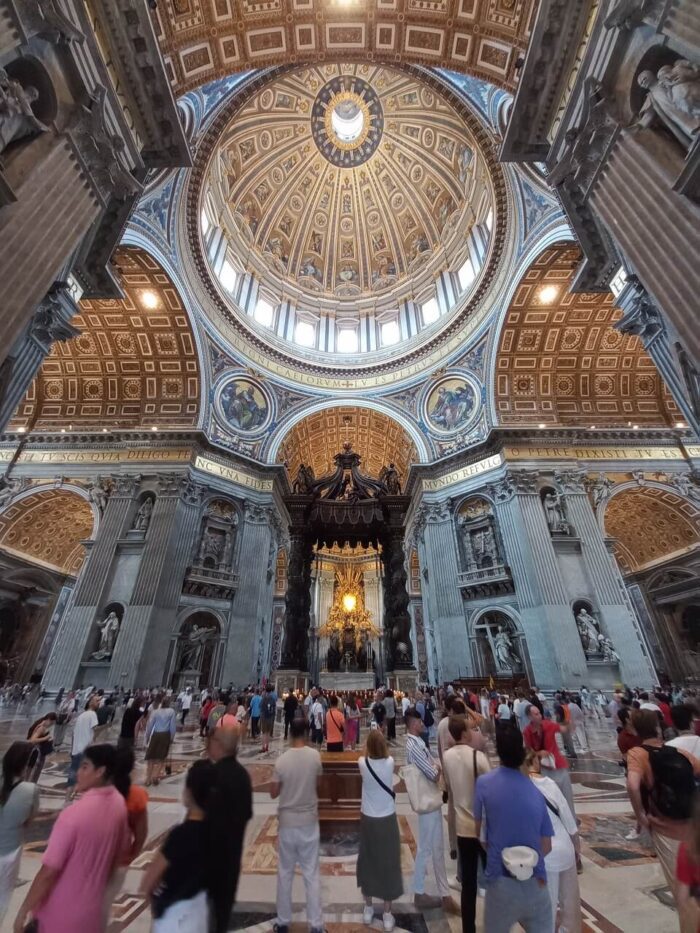
How to enjoy Vatican City?
To visit Vatican City, take the Rome Metro to Ottaviano Station. From there, it’s a short walk.
Arrive early to avoid crowds. Dress modestly, as strict dress codes apply. Shoulders and knees must be covered.
Booking tickets online for the Vatican Museums is wise. This skips long entrance lines.
Remember, St. Peter’s Basilica has free entry. However, it’s separate from the museums.
Conclusion
The choice of the places to include on this list was obvious. Less obvious was the list of those that had to be left out. It hurt because Rome is so rich.
Last time I went to Rome with my son I told him that the city is incredible because whichever way you look, there is “something”.
Maybe you have already been to Rome. Then I believe you will confirm the listed places are must-sees. And most probably you could and would add (many) more.
If you haven’t been to Rome but you have travel and adventure at heart, you can be sure that you will eventually end up in the Eternal City.
Because “all roads lead to Rome”
Happy travel
Marcin
My top places to see in Rome
- The Colosseum
- The Forum Romanum and the Palatine Hill
- The Pantheon
- Piazza Navona
- Piazza Venezia
- Quartiere Coppede
- The Spanish Steps
- Trastevere
- The Trevi Fountain
- Vatican City
Useful links
Rome public transportation website
Looking for more inspiration for places to visit?
The Best Of Europe: Top 10 Iconic Cities To Visit?
The Best Of North America: Your Ultimate Guide To 10 Most Vibrant Cities?

